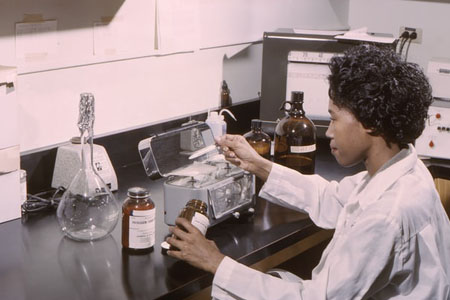Women in STEM- How can we help increase the numbers?
By Celeste Boggs
The past three years I have been busy working on my doctorate in Educational Leadership with a concentration in STEM Leadership. I have just completed my dissertation research and data analysis and have some interesting findings to share. My dissertation topic was A Quantitative Correlational Analysis of Educational Factors Influencing Women's STEM Major Selection. Basically, I was interested to find out if there was a relationship between STEM classroom experiences of high school girls and the decision to pursue a STEM major. It turns out, several instructional practices do in fact have an influence on a female's decision to pursue a STEM major! For the purposes of this article, I am describing correlations with an alpha of .05 or .01 (meaning they are statistically significant with 95% certainty and 99% certainty respectively).
Hands-on learning in high school science classes was strongly correlated with the decision to pursue a STEM major. This is specifically hands-on learning using or making physical models. The NGSS science practice this corresponds with is developing and using models. For example, using manipulatives such as ball and stick models to represent bonds between atoms and molecules, or by making physical models such as a cell or the structure of DNA. The more often females engage in this type of learning, the greater the influence on the decision to pursue a STEM major.
Hands-on learning in math class was also shown to be strongly correlated with the decision to pursue a STEM major. Hands-on learning in math involved using manipulatives such as a compass, protractor, base 10 cubes, or a ruler. The more frequently students were able to engage in hands-on learning, the greater the influence on pursuing a STEM major.
Engaging in laboratory investigations in high school science classes was shown to be strongly correlated with the decision to pursue a STEM major as well. The NGSS science practice this relates to is planning and carrying out investigations. The more frequently students are engaged in laboratory investigations, the greater the influence on deciding to pursue a STEM major. Students who were in the lab on a weekly basis reported the experience had a major influence on their major selection. The labs did not have to be inquiry-based. Any laboratory experience in which students are engaged in the process of conducting experiments or investigations was reported to have a strong positive influence on major selection.

Additionally, the greater the number of AP science classes students took, the greater the influence on major selection for those who had declared a STEM major. The most common AP science class participants had taken was AP biology, followed by chemistry and environmental science. This may be because students are already interested in science by the time they are able to take an AP class. Conversely, they may decide they will take the AP class, and then decide they like science and want to continue to take more AP science classes, and to then choose a STEM major. It is important to note my research was not causal comparative, so I must be clear: I am not making a claim that taking more AP science classes leads to declaring a STEM major.
What does this mean for classroom teachers? Structuring lessons to engage students in making and using physical models is an important component and should be incorporated into lesson planning and development. Using the 5E lesson model is a great way to bring in these hands-on learning experiences as part of the "Explore" and "Explain" components of the lesson sequence. Students can be provided a molecule stick and ball set and be asked to build several types of molecules to explore the concept of molecular structure. They can also use them to explain their understanding. After students build a specific molecule, they can explain in writing or in a presentation how they knew the molecular structure was correct in describing the properties of bonds.
Laboratory investigations are an important part of any science class, and the more you can structure your lesson sequence (5E or not) to include these, the better. If you are using the 5E lesson model, labs fit beautifully in the "Explore" "Explain" and even "Evaluate" portions of the lesson sequence, depending on your goals. You don't have to limit it to one lab per topic, either. Students can build an understanding of the concept by doing one lab and show how they can apply their knowledge by doing a different lab or designing one of their own.
Finally, schools should consider offering multiple AP science classes for students to take. At a minimum, every high school should offer AP biology and hopefully at least one additional AP science. Providing the opportunity for high school students to experience a college level science class can provide them with the confidence they may need to pursue a STEM major! This is so important for closing the gender gap for females in STEM majors and careers.
Thank you for reading. I hope you have found some useful information you can share with your colleagues and administrators to help more women feel confident and empowered within the STEM fields.
Celeste Boggs, Teacher at Wheatland Union High School District. Contact Celeste at cboggs@wheatlandhigh.org





